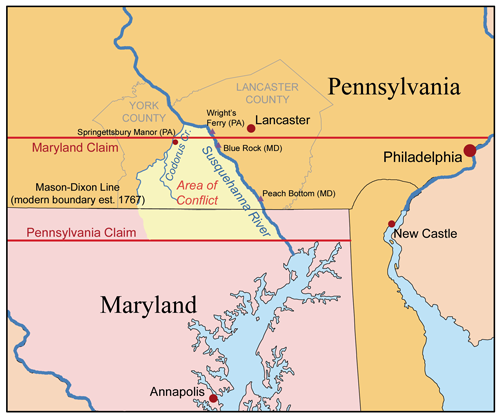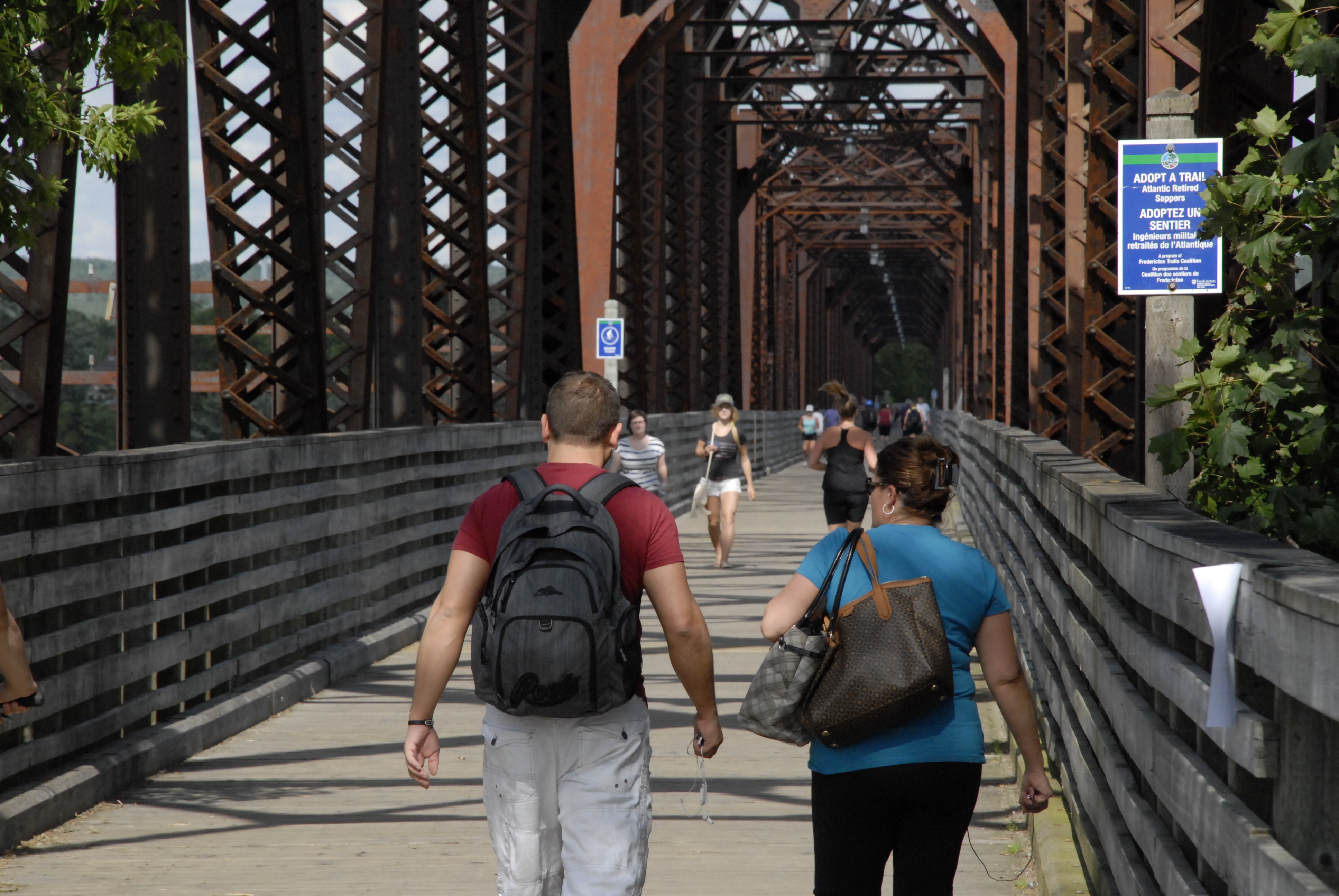|
Conewago Recreation Trail
The Conewago Recreation Trail is a public recreational rail trail A rail trail is a shared-use path on railway right of way. Rail trails are typically constructed after a railway has been abandoned and the track has been removed, but may also share the right of way with active railways, light rail, or streetca ... that follows the once Cornwall-Lebanon Railroad rail corridor for a total of slightly over 5.0 miles. The trail stretches from Elizabethtown, PA to the Lebanon County Line, PA, at which point it links up to the Lebanon Valley Rail Trail which continues for another 15.0 miles. The Conewago Recreation Trail runs adjacent to the Conewago Creek running through quiet farmland and forested areas. Trail goers can enjoy walking, jogging, bicycling, horseback riding and other non-motorized recreational uses from dawn to dusk, seven days a week throughout the year. The majority of the trail is shaded by tree cover which limits the direct sunlight in the summer months. The l ... [...More Info...] [...Related Items...] OR: [Wikipedia] [Google] [Baidu] |
Lancaster County, Pennsylvania
Lancaster County (; Pennsylvania Dutch: Lengeschder Kaundi), sometimes nicknamed the Garden Spot of America or Pennsylvania Dutch Country, is a county in the Commonwealth of Pennsylvania. It is located in the south central part of Pennsylvania. As of the 2020 census, the population was 552,984. Its county seat is Lancaster. Lancaster County comprises the Lancaster, Pennsylvania metropolitan statistical area. Lancaster County is a tourist destination with its Amish community a major attraction. Contrary to popular belief, the word "Dutch" in "Pennsylvania Dutch" is not a mistranslation, but rather a corruption of the Pennsylvania German endonym ''Deitsch'', which means "Pennsylvania Dutch / German" or "German". Ultimately, the terms Deitsch, Dutch, Diets, and Deutsch are all cognates of the Proto-Germanic word meaning "popular" or "of the people". The continued use of "Dutch" instead of "German" was strengthened by the Pennsylvania Dutch in the 19th century as a way ... [...More Info...] [...Related Items...] OR: [Wikipedia] [Google] [Baidu] |
Pennsylvania Route 230
Pennsylvania Route 230 (PA 230) is a long state route in central Pennsylvania. Its western terminus is at an intersection with U.S. Route 22 (US 22) in Harrisburg. Its eastern terminus is at an interchange with PA 283 near Salunga. The route passes northwest-southeast through Dauphin and Lancaster counties and serves as a surface road parallel to the PA 283 freeway that connects the cities of Harrisburg and Lancaster. Along the way, PA 230 passes through Middletown, Elizabethtown, and Mount Joy. The route intersects the Airport Connector near the Harrisburg International Airport, PA 441 and PA 341 in the Middletown area, PA 241 and PA 743 in Elizabethtown, and PA 772 in Mount Joy. The road between Middletown and Lancaster was originally a private turnpike dating back to the 18th and 19th centuries. Legislative Route 129 was designated between Harrisburg and Lancaster in 1911. With the creation of the U.S. Highway System in 1926, a spur of US 30 called U.S. Route 230 ... [...More Info...] [...Related Items...] OR: [Wikipedia] [Google] [Baidu] |
Lebanon County, Pennsylvania
Lebanon County ( Pennsylvania Dutch: Lebanon Kaundi) is a county in the Commonwealth of Pennsylvania. As of the 2010 census, the population was 133,568. Its county seat is the city of Lebanon. The county was formed from portions of Dauphin and Lancaster counties in 1813, with minor boundary revisions in 1814 and 1821. Lebanon County comprises the Lebanon, Pennsylvania, metropolitan statistical, which is part of the Harrisburg–York–Lebanon combined statistical area. Lebanon is 72 miles northwest of Philadelphia, which is the nearest major city. Geography According to the U.S. Census Bureau, the county has a total area of , of which is land and (0.2%) is water. Most of it is drained by the Swatara Creek into the Susquehanna River while some eastern portions are drained by the Tulpehocken Creek (which originates in the county near Myerstown) eastward into the Schuylkill River. It consists in large part of a valley. Climate The county has a hot-summer humid contine ... [...More Info...] [...Related Items...] OR: [Wikipedia] [Google] [Baidu] |
Lebanon Valley Rail Trail
The Lebanon Valley Rail Trail (LVRT) is a National Recreation Trail. The rail trail goes from the southwestern border of Lebanon County and goes through Colebrook, Mt. Gretna, Cornwall, and the city of Lebanon. At the southern border of Lebanon County, Pennsylvania the LVRT connects with the Conewago Recreation Trail The Conewago Recreation Trail is a public recreational rail trail that follows the once Cornwall-Lebanon Railroad rail corridor for a total of slightly over 5.0 miles. The trail stretches from Elizabethtown, PA to the Lebanon County Line, PA, at w ... and continues for another . The trail is partly built on the old Cornwall–Lebanon Railroad created by industrialist Robert Coleman in the 1880s. The trail runs , and there are many phases in development that would extend the trail to northern Lebanon County and Jonestown. The trail features a packed stone path and paved path at many parts that traverses "Pennsylvania Dutch Country" and other scenic routes. Trail us ... [...More Info...] [...Related Items...] OR: [Wikipedia] [Google] [Baidu] |
Parking Icon
Parking is the act of stopping and disengaging a vehicle and leaving it unoccupied. Parking on one or both sides of a road is often permitted, though sometimes with restrictions. Some buildings have parking facilities for use of the buildings' users. Countries and local governments have rules for design and use of parking spaces. Car parking is essential to car-based travel. Cars are typically stationary around 95 per cent of the time. The availability and price of car parking supports and subsidize car dependency. Car parking uses up a lot of urban land, especially in North America - as much as half in many North American city centers. Parking facilities Parking facilities can be divided into public parking and private parking. * Public parking is managed by local government authorities and available for all members of the public to drive to and park in. * Private parking is owned by a private entity. It may be available for use by the public or restricted to custom ... [...More Info...] [...Related Items...] OR: [Wikipedia] [Google] [Baidu] |
Information Icon
Information is an abstract concept that refers to that which has the power to inform. At the most fundamental level information pertains to the interpretation of that which may be sensed. Any natural process that is not completely random, and any observable pattern in any medium can be said to convey some amount of information. Whereas digital signals and other data use discrete signs to convey information, other phenomena and artifacts such as analog signals, poems, pictures, music or other sounds, and currents convey information in a more continuous form. Information is not knowledge itself, but the meaning that may be derived from a representation through interpretation. Information is often processed iteratively: Data available at one step are processed into information to be interpreted and processed at the next step. For example, in written text each symbol or letter conveys information relevant to the word it is part of, each word conveys information relevant ... [...More Info...] [...Related Items...] OR: [Wikipedia] [Google] [Baidu] |
Rail Trail
A rail trail is a shared-use path on railway right of way. Rail trails are typically constructed after a railway has been abandoned and the track has been removed, but may also share the right of way with active railways, light rail, or streetcars ( rails with trails), or with disused track. As shared-use paths, rail trails are primarily for non-motorized traffic including pedestrians, bicycles, horseback riders, skaters, and cross-country skiers, although snowmobiles and ATVs may be allowed. The characteristics of abandoned railways—gentle grades, well-engineered rights of way and structures (bridges and tunnels), and passage through historical areas—lend themselves to rail trails and account for their popularity. Many rail trails are long-distance trails, while some shorter rail trails are known as greenways or linear parks. Rail trails around the world Americas Bermuda The Bermuda Railway ceased to operate as such when the only carrier to exist in Bermuda folded in 19 ... [...More Info...] [...Related Items...] OR: [Wikipedia] [Google] [Baidu] |
Elizabethtown, PA
Elizabethtown (Pennsylvania Dutch: ''Betzischteddel'') is a borough in Lancaster County, Pennsylvania, United States. It is located southeast of Harrisburg, the state capital. Small factories existed at the turn of the 20th century when the population in 1900 was 1,861. As of the 2020 census, the population of the borough was 11,639. Elizabethtown is commonly referred to in south-central Pennsylvania as "E-Town." This nickname is also used for the local college and high school. History There are two stories about the origin of the town's name. In one version it is named after Elizabeth Reeby, wife of Michael Reeby who sold the first building lots here in about 1795. The officially accepted history is that, in 1753, Captain Barnabas Hughes acquired land and laid out a town, naming it for his wife, Elizabeth. The early settlers were primarily Scots-Irish and Pennsylvania Dutch. Elizabethtown became a borough in 1827, and a railroad was built through the area in the 1830s. The t ... [...More Info...] [...Related Items...] OR: [Wikipedia] [Google] [Baidu] |
Lebanon County
Lebanon County ( Pennsylvania Dutch: Lebanon Kaundi) is a county in the Commonwealth of Pennsylvania. As of the 2010 census, the population was 133,568. Its county seat is the city of Lebanon. The county was formed from portions of Dauphin and Lancaster counties in 1813, with minor boundary revisions in 1814 and 1821. Lebanon County comprises the Lebanon, Pennsylvania, metropolitan statistical, which is part of the Harrisburg–York–Lebanon combined statistical area. Lebanon is 72 miles northwest of Philadelphia, which is the nearest major city. Geography According to the U.S. Census Bureau, the county has a total area of , of which is land and (0.2%) is water. Most of it is drained by the Swatara Creek into the Susquehanna River while some eastern portions are drained by the Tulpehocken Creek (which originates in the county near Myerstown) eastward into the Schuylkill River. It consists in large part of a valley. Climate The county has a hot-summer humid continenta ... [...More Info...] [...Related Items...] OR: [Wikipedia] [Google] [Baidu] |
Conewago Creek (east)
Conewago Creek is a U.S. Geological Survey. National Hydrography Dataset high-resolution flowline dataThe National Map, accessed August 8, 2011 tributary of the Susquehanna River in Lebanon, Dauphin, and Lancaster counties in Pennsylvania in the United States. The source is at an elevation of at Mount Gretna Heights in Lebanon County. The mouth is the confluence with the Susquehanna River at an elevation of at the border of Dauphin and Lancaster counties, just south of Three Mile Island in the river and just north of the unincorporated village of Falmouth in Conoy Township, Lancaster County. Name The name of the creek comes from the Lenape, meaning "at the rapids". The rapids are the Conewago Falls in the Susquehanna River, which also give their name to the other Conewago Creek, whose mouth is on the west bank of the Susquehanna River in York County, only south of the mouth of this Conewago Creek. Course Conewago Creek flows generally southwest its entire length. The ... [...More Info...] [...Related Items...] OR: [Wikipedia] [Google] [Baidu] |
Conewago Trail Sign
Conewago may refer to: Communities * Conewago Township, Pennsylvania (other) Streams *Conewago Creek (west), in Adams and York Counties, Pennsylvania *Conewago Creek (east) Conewago Creek is a U.S. Geological Survey. National Hydrography Dataset high-resolution flowline dataThe National Map, accessed August 8, 2011 tributary of the Susquehanna River in Lebanon, Dauphin, and Lancaster counties in Pennsylvania in t ..., Pennsylvania * Conewago Falls, an historic falls flanking Three Mile Island near Harrisburg, Pennsylvania See also * {{place name disambiguation ... [...More Info...] [...Related Items...] OR: [Wikipedia] [Google] [Baidu] |
Robert Coleman (industrialist)
Robert Coleman (November 4, 1748 - August 14, 1825) was an American industrialist and politician who became Pennsylvania's first millionaire. Early life Coleman was born in Castlefin in County Donegal, Ireland, one of eight children of Thomas Coleman. Although born in Ireland, his family was English. He immigrated to America, arriving in Philadelphia, Pennsylvania in 1764 when he was sixteen years old. According to tradition, he brought with him two letters of introduction and three guineas. He worked as a clerk for merchant Mark Biddle who was impressed with Coleman's penmanship and attention to detail. This led to Coleman being hired as a bookkeeper by prominent iron masters Curtis and Peter Grubb of the Hopewell Forge furnace. While working for the Grubbs, Coleman learned about the iron making industry and what it took to become an ironmaster. He also learned that operating an iron furnace it took little cash, as workers were paid with supplies which were, in tern, acquired ... [...More Info...] [...Related Items...] OR: [Wikipedia] [Google] [Baidu] |




